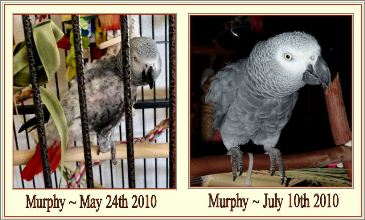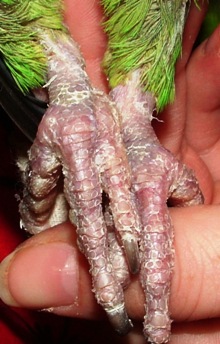Vitamin A Deficiency in Parrots
Vitamin A is an extremely important vitamin that helps maintain the health of skin. When there is not enough vitamin A, skin loses its suppleness and becomes dry and flakey. Beaks and toenails may grow at very fast rates and may start to become deformed. The skin itself may become very itchy and a parrot may start to pluck at its feathers. The feathers may develop abnormal coloration--for example, a dark green Amazon parrot may appear a light yellowish-green or have streaks of white or yellow throughout its feathers. The feathes are also brittle and break easily. It is very common for a parrot with a vitamin A deficiency to have broken and frayed tail feathers.
Other organ systems depend on vitamin A. Without enough vitamin A, the lining of the nose and mouth becomes dry. Thick secretions may build up in the mouth and the papilla that act as filters along the choana become dull and blunted. The nose starts to have a discharge that may be thick or crusty. Female parrots often develop reproductive problems and a vitamin A deficiency may underlying many dystocias. The kidneys may not work as efficiently and can fail after being on diet that is lacking enough vitamin A.
The single most important thing you can do to have a healthy parrot is to provide a varied diet including pellets, healthy seeds and nuts, and fruits, vegetables, and grains so that it includes adequate amounts of vitamin A and is well balanced for all its other nutrients. If you see any signs of vitamin A deficiency, such as flakey skin, overgrown flakey beak, overgrown toenails, abnormally light or brittle feathers, a crusty nose, or any other unusual signs, schedule an examination with an experienced avian veterinarian. Some parrots can show dramatic improvement very quickly as seen below.
For more information on parrot nutrition,please see our page Bird Diet Recommendations.

An African grey parrot from Arizona Exotic Bird Rescue that responded rapidly to vitamin A supplementation and improved diet.


